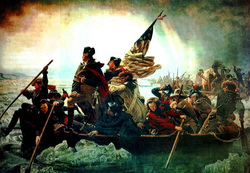Bill of Rights
Most concerns about a too-powerful central government were addressed by the 1789 proposal to add a bill of rights to the Constitution. Made up of the first ten amendments to the Constitution, the Bill of Rights is series of limitations to the U.S. government.
The Bill of Rights are the first 10 amendments to the Constitution that provides and protects freedoms for US citizens. Today, just like in the late 1700's people still fight to protect the freedoms of this country. Groups like the American Civil Liberties Union (ACLU) are among the people who fight for these freedoms on a daily basis.
Assignment...
1. Read the Bill of Rights by clicking on the link (there are only 10 so read them all).
2. Next go to the ACLU of Ohio site and pick an issue currently being discussed in Ohio.
3. In open office I want you to write about your issue. Your writing should include the following...
OH Grade 8, Social Studies Standard History 6
Explain the challenges in writing and ratifying the U.S. Constitution including:
Most concerns about a too-powerful central government were addressed by the 1789 proposal to add a bill of rights to the Constitution. Made up of the first ten amendments to the Constitution, the Bill of Rights is series of limitations to the U.S. government.
The Bill of Rights are the first 10 amendments to the Constitution that provides and protects freedoms for US citizens. Today, just like in the late 1700's people still fight to protect the freedoms of this country. Groups like the American Civil Liberties Union (ACLU) are among the people who fight for these freedoms on a daily basis.
Assignment...
1. Read the Bill of Rights by clicking on the link (there are only 10 so read them all).
2. Next go to the ACLU of Ohio site and pick an issue currently being discussed in Ohio.
3. In open office I want you to write about your issue. Your writing should include the following...
- What issue did you choose and describe it (3-5 Sentences)
- What number Amendment is it related to (1-10)
- Is this an issue Americans faced when the Bill of Rights was being written? (1-2 sentences)
- How you feel about this issue, are you for it? Against it? Not affected? (2-3 sentences)
- Please then copy and paste your respond in the comment section of this post.
OH Grade 8, Social Studies Standard History 6
Explain the challenges in writing and ratifying the U.S. Constitution including:
- The debate over a Bill of Rights.

 RSS Feed
RSS Feed